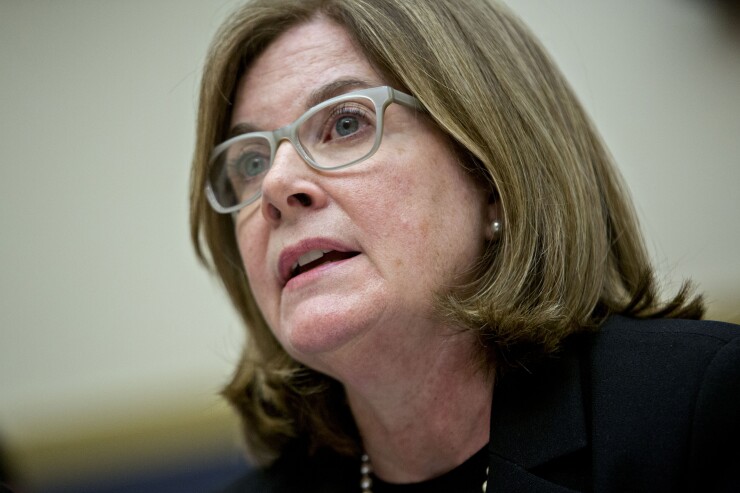Esther George, president of the Federal Reserve Bank of Kansas City, is poised to leave office this week without a permanent successor.
George, who has helmed the regional reserve bank since 2011,
Upon her departure, the bank's first vice president and chief operating officer, Kelly Dubbert, will become interim president and CEO until a full-time replacement is hired, according to a statement published on the bank's website on Jan 12.
Dubbert has worked at the Kansas City Fed since 1986. He joined the bank's official staff in 1993 and has held several positions since then, including manager of its Oklahoma City branch and chief information officer. He took on his current role in 2012.

The Jan. 12 statement noted that there will be no time constraint on the search for a new president.
"The Search Committee is assessing candidates based on the criteria included in the job description that is posted on the Kansas City Fed's website," the statement reads. "Because the focus is on identifying the best candidate for this role, there is no deadline associated with this process."
The reserve bank officially
The Fed has required reserve bank presidents to retire at 65 — with exceptions for those who have not yet served in the position for 10 full years — for decades. Because of this, experts familiar with Fed practices say the search for a new president likely began months before last spring's announcement.
Still, at eight months, the process for finding George's full-time replacement has exceeded recent norms. Even for unexpected openings — when presidents have left to take other governmental jobs or resigned amid scandal — making a new hire typically takes only six months, according to data compiled by University of Pennsylvania researcher Kaleb Nygaard.
The only longer hiring process was San Francisco's 2010 search to replace Janet Yellen, who left the post to join the Fed's Board of Governors in Washington. That process spanned 10 months, with John Williams — now the president of the New York Fed — being ultimately tapped for the job.
The length of Kansas City Fed's search also stands in contrast to Chicago Fed's recent effort to replace retiring President Charles Evans, which wrapped up on Dec. 1 as the bank
Yet there was one key distinction between the two institutions — the Chicago Fed has a voting seat on the Fed's Federal Open Market Committee, which sets monetary policy at the central bank. George had a voting seat last year, meaning her successor won't have a vote until 2025.
The search for a new president comes at a tumultuous time for the Kansas City Fed, as it is involved in heated litigation with Custodia Bank. The Cheyenne, Wyoming-based digital-asset bank is suing the reserve bank and the Board of Governors over access to a so-called master account, which comes with access to the Fed's payment system.
Last week, the Kansas City Fed
The Kansas City Fed, which oversees the Fed's largely rural 10th district, was also the subject of congressional scrutiny for granting — then later revoking — a master account to Greenwood Village, Colrado-based digital- asset trust Reserve Trust. While the chief architect of that probe, then-Sen. Pat Toomey, R-Pa., has since retired, leading Republicans on the Senate Banking Committee such as Tim Scott, R-S.C., and Cynthia Lummis, R-Wyo., have signaled their intent to carry the touch for the effort into the 118th Congress.
George's retirement ends a four-decade tenure at the Kansas City Fed that saw her leading roles in supervision and risk management, research management, public affairs and human resources before becoming first vice president in 2009 and president in 2011.
Her successor will be picked by the bank's five-member search committee, but the Fed's Board of Governors must approve the selection.






